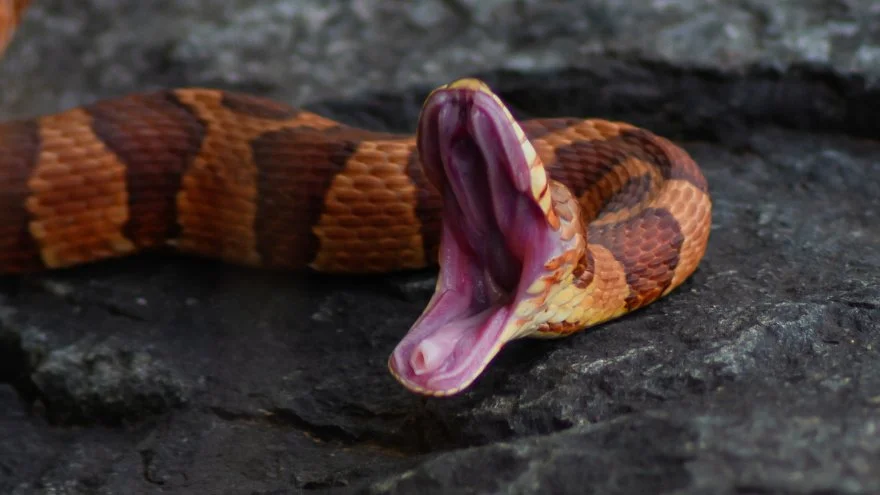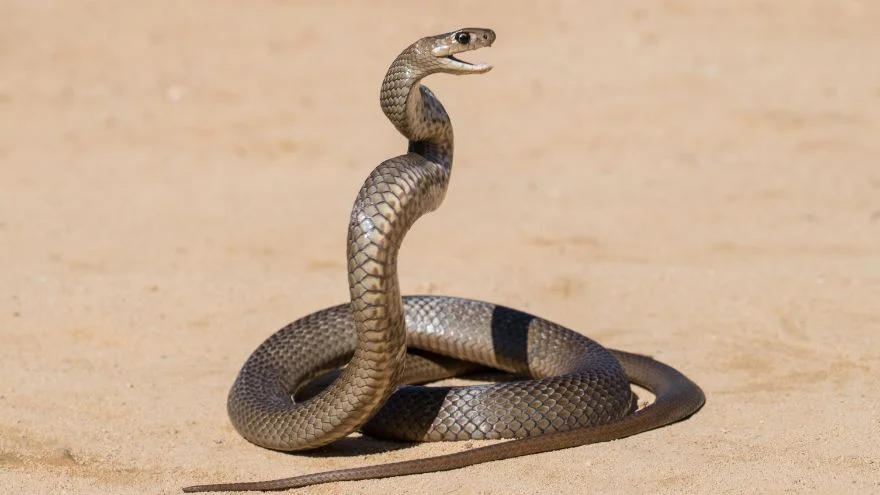Snakes (also serpents) are elongated, legless, carnivorous reptiles of the order Squamata and suborder Serpentes.
They are unique among living organisms in that they lack a bladder or any other form of the cloaca to discharge waste and have an integrated digestive and excretory system that is one long system.
They inhabit every continent and island in the world, with the exception of Antarctica.
North, South, and Central America are home to New World snakes, while Africa, Europe, and Asia are home to Old World snakes.
This article will take a closer look at this interesting slithering reptile. You will learn about its anatomy, diet, habitat, and more.
Scientific Classification
- Kingdom: Animalia
- Phylum: Chordata
- Class: Reptilia
- Order: Squamata
- Scientific Name:Serpentes
Characteristics
- Height: 18 to 24 feet
- Weight: 150Kg (330 lbs)
- Venom/Poison: Yes (about 600 snake species are venomous)
- Skin Type: Scales
- Habitat: Forests, swamps, grasslands, deserts, freshwater, and saltwater
- Range: Worldwide except in Antarctica, Iceland, Ireland, Greenland, and New Zealand.
- Diet: Carnivore
- Lifespan: 30 years
- Gestation Period: 28 to 45 days in the wild, 30 to 60 days in captivity
- Conservation Status: Not extinct
5 Interesting Facts About Snakes
1. Not all snakes are venomous
Because of their deadly venom, these reptiles tend to terrify most people, but do you know that not all snakes are poisonous?
There are more than 3000 species of snakes on the earth, 600 of which are poisonous, while the remaining 7% are not.
The nonvenomous species include pythons and garter snakes. Although both venomous and nonvenomous snake bites can be fatal, it is crucial to distinguish between the two since venomous species pose the highest risk.
At first glance, it can be challenging to distinguish between them, but if you look closely, you can. A nonvenomous species has a spherical head without pits, whereas venomous snakes have triangular heads with pits.
Nonvenomous species do not rattle, whereas venomous ones do. The former is always vibrantly colored and patterned, whereas the latter is frequently less colorful with one solid color.
A nonvenomous snake kills by constriction, whereas a venomous species uses its venom to kill its prey.
2. They use their tongues to smell their surroundings
Serpents do, in fact, use their tongues to smell their surroundings, which may seem weird.
Although they have nasal apertures for air intake, their forked tongues serve primarily and more effectively for primary sensory activities like smelling their surroundings.
A snake will swiftly flick its tongue in the air or on the ground to collect minute chemical particles.
Then it pulls the tongue back into its mouth, where it slides into the Vomeronasal organ, a unique organ on the roof of the mouth, also known as Jacobson’s organ.1 2
The microscopic particles gathered on the snake’s tongue will be taken by this unique organ, which will then trigger various electrical signals connected to the brain.
They use their special sense of smell to locate prey and evade predators and other things.
3. Snakes can lay eggs and also have live births
Snakes now have a variety of ways to give birth, thanks to evolution. They are capable of both egg-laying and live births if they are oviparous, viviparous, or ovoviviparous.
Unlike ovoviviparous snakes, which create eggs in their wombs and give birth to their young shortly before laying them, the young of a viviparous snake develop in their mother’s wombs without a shell and are born alive.
A viviparous species never forks its eggs. Cobras, coral and corn snakes, mambas, sea kraits, wolf snakes, etc., are examples of oviparous snakes.
The anacondas and garter snakes are two examples of viviparous species. Boas and rattlesnakes are examples of ovoviviparous species.
Each of these birth techniques has advantages of its own. They can regulate their body’s temperature more effectively than live-bearing species.
While egg laying gives the mother more movement, love bearing enables her to safeguard her growing embryo better until it is ready to be born.
4. Snakes have bones
Because of their flexibility, it is completely normal to assume that snakes are boneless creatures, yet this assumption is incorrect. In fact, these serpents have more bones than humans have. Sneaky, yes?
They are vertebrates or backboned animals. Their bodies’ strength and structure come from these bones.
The many bones within a snake are the reason for its flexibility. These serpents have incredibly long spines composed of several intricately arranged vertebrae, nearly reaching the length of their bodies.
The number of bones a snake has depends on its size. Some species, like the long-bodied mamba, can have as many as 400 vertebrae in their backbone, while the short-bodied viper can have just 180.
5. They are not entirely solitary animals
Due to their sneaky nature, many believe these reptiles to be solitary creatures. However, this belief is not entirely false as most snakes spend most of their life hiding from humans (these ones do not have a natural desire to stay in a community).
However, evidence suggests that these creatures, particularly garter snakes, also enjoy forming close ties with one another.
According to an experiment conducted by Morgan Skinner, a doctorate candidate in behavioral ecology at Wilfrid Laurier University in Canada, snakes also seek out social relationships exactly like people do, and choose who to associate with and who to avoid.
General Description
Snakes are reptiles belonging to the Squamata order. They have a long, slender body, one functioning lung, no limbs, voice, external ears, or eyelids.
They have scales covering their skin. They have sharp vision, and their tongues are constantly tasting the air around them. The majority of the known 3,000 species reside in the tropics.
Snakes can hiss, despite having no voice. Most of them inhabit the ground, but others are arboreal, aquatic, or borrowers.
They move by contracting their muscles with the help of their abdomen’s lengthy scales. 70% of their primarily solitary existence is devoted to pursuing, catching, and digesting their live prey.
They can swallow enormous prey whole because of the way their bodies and jaws are built.
A single meal can frequently keep a snake alive for several weeks because they are ectotherms (cold-blooded).
Seasonal behaviors like mating, producing eggs, or giving birth to live offspring are fleeting.
One-tenth of all species are poisonous; some can kill people with their bites. Others consume or constrict their victim to death.
The length of the species ranges from under 5 inches (12 cm) to over 30 feet (9 m). Snakes shed their old skin at each growth stage as they continue to grow throughout their lifetimes.
Although they are widespread, only a small number of species may be found on islands or in areas with long winters.
Distribution and Habitat
Today, there are more than 3000 species of snakes, most of which are found in warm, tropical settings.
They have evolved to thrive in various aquatic, underground, and arboreal ecosystems.
Regions of extreme and widespread cold (such as polar regions like Antarctica) and islands like Ireland, Iceland, Greenland, and New Zealand are the only habitats where they cannot be found.
Their favored habitats include swamps, oceans, fresh and salt water, grasslands, temperate woods, tropical rainforests, and deserts. Numerous species are found in human-populated places, according to a survey.
Diet
Since all snakes are strictly carnivorous (flesh eaters), most plant material cannot be digested by their digestive systems.
Their nutrition and eating habits vary depending on the species and body size, and they hunt at night.
Some species, such as the Australian bandy-bandy and the King cobra, will cannibalize a member of the same or other species.
Others will consume insects, eggs, fish, snails, earthworms, slugs, amphibians, other reptiles, and warm-blooded prey like rodents, rabbits, and birds.
Snakes swallow their meal whole rather than biting it or tearing it into bits. Because digesting requires a lot of energy, especially after ingesting a large prey, they become dormant as food breaks down.
In species that only sometimes eat, the entire intestine goes into a decreased condition between meals to preserve energy.
Within 48 hours of eating the prey, the digestive system is up-regulated to its maximum capacity.
The temperature of the environment is crucial to a snake’s digestive process. They can digest food best at a temperature of 30 °C (86 °F).3
A snake will vomit its prey if it is startled soon after eating to escape the perceived danger. Its digestive system is extremely effective when unaffected; it dissolves and absorbs everything but hair and claws.
Some species can fend off hunger for a long period after a substantial meal. After consuming a large prey, anacondas and pythons can last up to a year without needing to hunt for food.
Reproduction and Mating Process
When it comes to reproduction, snakes are unique compared to other animals. For example, did you know that some species can reproduce without a mate?
This is called parthenogenesis (also called “virgin birth”, and it occurs when an egg develops without being fertilized by a male.4
The mating process for snakes can vary depending on the species but typically involves the male wrapping his body around the female and inserting one of his hemipenes (sex organs) into her cloaca (reproductive opening).
The male then releases his sperm into the female’s body, which will travel to fertilize her eggs. Of course, most species still reproduce the old-fashioned way – with a mate.
Once the eggs are fertilized, the female will lay them in a protected location before abandoning them.
The young snakes will then hatch out of their eggs and be on their own from day one!
Predators and Threats
Humans are one of the major threats to the snake population. When these reptiles are young, many birds and mammals find them easy prey, but as they get older, they have to worry about humans.
The biggest danger to a reptile’s existence is habitat degradation. Humans are destroying snakes’ ecosystems to create room for ranches, farms, and highways.
In fact, the IUCN Red List lists about 100 snake species as endangered, often due to habitat loss from development.5
People hunt snakes for different reasons. Many different snake breeds are caught and transported to various locations to be sold as pets.
Some venomous snakes produce anti-venoms for people who have been bitten; snakeskin is used to create various products, including clothing accessories like shoes, handbags, and belts. In addition, people kill snakes out of fear.
Several other animal species, such as numerous birds, such as owls, secretary birds, hawks, falcons, and herons, also hunt and kill snakes.
A lot of snake species, like the King Cobra and Kingsnake, also consume other snakes. Therefore, the main predators of snakes are people, birds, and other snakes.
Among the mammals that prey on snakes are mongoose, honey badger, hedgehog, bobcat, Scottish terrier, fox, coyote, wild boar, etc.
Mongoose
The mongoose naturally likes killing snakes; hence, these reptiles are on their menu. Due to unique acetylcholine receptors, the mongoose, which resembles a weasel, is immune to the effects of snake venom.6
When confronted with a dangerous snake, this skill, along with a thick covering of fur, makes it a powerful fighter.
Honey Badger
The honey badger is a bold carnivore that can kill these serpents by crushing their skulls with its strong jaws and is immune to cobra venom.
Scottish Terrier
This breed of dog is skilled at capturing snakes, but unlike honey badgers and mongooses, it lacks venom immunity. It excels in taking out snakes and rodents.
Hedgehog
Hedgehogs are natural predators of venomous and non-venomous snakes. Up until you see them attacking these reptiles, they appear to be calm.
The hedgehog has created incredible defenses against virtually any assault. Its body is covered in sharp spikes, making it unpleasant to bite.
Hedgehogs have a built-in defense mechanism that allows them to withstand a serpent’s bites, although they aren’t as resistant to its venom as the mongoose is.
Although most of the time, they’d be too afraid to try, domestic animals, especially those with hooves like horses, cows, and pigs, also have a fair share of snake-killing prowess.
However, the serpent is effectively dead if the animal is the herd leader. Hooved animals are not the only domesticated animals skilled at killing snakes.
Armadillo
Even while the timid armadillo won’t regularly eat snakes, it is generally known to attack them when the chance arises, utilizing its armor to cut snakes down.
Bobcat and Wolverine
With their thick coats and quick reflexes, these outstanding and agile carnivores make formidable foes for snakes.
Birds
Many birds, including owls, hawks, herons, etc., enjoy eating snake meat and have no problem scooping up a snake, killing it with their talons, or dumping it from an absurd height.
Due to their fear of birds, snakes are frequently eager to crawl over large, open places like mowed lawns.
Turkeys, particularly, are skilled snake-fighters, as are chickens and other game birds. If the serpent is tiny enough, they will devour it because they enjoy eating snakes.
Although they are not immune to snakes’ venom, their feathers are a natural barrier against fang-related puncture wounds.
Snakes
Snakes are prey for themselves. The bigger species usually eat the smaller ones.
One of the most dreaded cannibal snakes is the king snake. Other species are their main source of nutrition (e.g., rattlesnakes)
Although it is difficult to imagine, snakes do have adversaries, as you can see. Many animals have a solid understanding of what it means to kill these writhing monsters.
Behavior
People frequently have the wrong idea about these reptiles. They are frequently viewed as slimy, dangerous creatures that should be avoided at all costs.
A few things to bear in mind regarding a snake’s behavior: since there are more than 3,000 different species in the world, there will inevitably be significant behavioral variety.
Some are highly gregarious, while others are shy and withdrawn and will make every effort to avoid interacting with people. Others are nocturnal, while some are more active throughout the day.
Despite being inherently non-aggressive creatures, certain species will strike if they feel threatened, while others will attempt to avoid conflict.
Most species only bite if they feel cornered or threatened. However, some species are known to be particularly aggressive and will bite even if they do not feel threatened.
There are, however, a few traits that all snakes share—they are carnivores, which means they only go after other animals to eat.
They go after insects, small mammals, reptiles, and amphibians. They will kill their prey with their muscular body and keen jaws before consuming it whole. Some species will consume carrion as well (dead animals).
Snakes usually forage for food at night since it is cooler and simpler to find prey then. They will hit their target with their razor-sharp teeth, then coil around it and enclose it, suffocating it or causing cardiac arrest until the prey dies.
Their capacity for climbing is among their most intriguing characteristics. Snakes are proficient at climbing trees and other buildings, despite the misconception that they can only move along the ground. Arboreal snakes that live in trees frequently exhibit this behavior.
The way these reptiles hunt is another intriguing trait. Snakes locate their prey by using their strong sense of smell.
Then, with lightning-fast attacks, they will pounce on their target, killing them with poison and razor-sharp fangs.
Local species will go into a state of brumation in areas where the winters are too chilly for snakes to withstand while still being active.
The inert mammals are genuinely asleep during hibernation, but brumating reptiles are awake but passive.
Individual species may hibernate in caves, beneath heaps of rocks, or inside downed trees, while vast groups may congregate in hibernacula.
Ecdysis, commonly known as molting, occurs around once a month and allows them to rebuild any damaged tissue, make room for development, and get rid of any parasites that could be dwelling on their skin.7
They slither from their skin, head first, discarding it inside-out after rubbing against a tree branch or other object.
Some snakes are solitary animals that only assemble to breed. Except when they are lazing in the sun or looking for food, they normally spend most of their time alone.
Most species lay eggs, but some, like sea snakes, give birth to their young alive. Except for pythons, which incubate their eggs, few species are interested in their eggs.
Snakes aren’t thought to be very intelligent animals. However, they have been seen to show some intellect when navigating and seeking food.
Additionally, some study has indicated that snakes could be able to experience fundamental feelings like pain, fear, and delight.
Male vs. Female
There are many differences between male and female snakes, but the most notable difference is their size.
Male snakes are typically larger than females, with some species exhibiting extreme size dimorphism (males being much larger than females).
This size difference is due to various factors, including growth rates and metabolisms.
Another significant difference between males and females is their reproductive organs. Males have two testes, while females have two ovaries.
The reproductive organs are located near the base of the tail in both sexes. In addition, males typically have broader tails than females, which helps to distribute their body heat more evenly.
Finally, males and females often exhibit different patterns and colors. For example, some males will have brighter colors or patterns than females of the same species to attract mates.
This sexual dimorphism is thought to help with mate selection and identification.8
Frequently Asked Questions
What happens when a snake gets too cold?
Snakes and other reptiles will go into brumation in the winter. Brumation is distinct from hibernation while being similar. These reptiles are cold-blooded creatures; thus, during the cooler months, they will become less active as a result of being fatigued by the chilly weather.
Are snakes dangerous to humans?
Both venomous and non-venomous snakes prefer to flee over potentially deadly contact since they do not see humans as prey. Their last-ditch effort to protect themselves involves biting. But they may bite or strike if we sense that we are threatening them. The easiest way to prevent an unpleasant encounter is to allow this reptile to carry out its duties in the landscape.
What temperature is good for snakes?
A snake is most active when the temperature outside is between 70°F and 90°F (32°C). Meanwhile, it will become lethargic when the temperature lowers below 60°F (16°C).
Can you keep snakes as pets?
Snakes will make terrific companions for those who want all that a snake has to offer in a pet. However, because they are wild creatures, they are generally not intended to be domesticated.
Final Thoughts
The snake is a fascinating creature that has been both feared and revered throughout history.
Although they are often seen as dangerous, these serpents play an important role in the ecosystem and can even be kept as pets.
While they may not be everyone’s favorite animal, there is no denying that they are interesting creatures worthy of our attention.
Latest Snakes Articles
References & Notes
- Ahmad G., Mohsen A., et. al., (2013). Histological Studies on the Vomeronasal Organ of the Worm-like Snake, Typhlops vermicularis. Journal of Biological Sciences, 13: 372-378.
- How Do Snakes Smell: The Jacobson Organ. (2015). [online] ElementalScience.
- Reptiles and Environmental Temperatures. (2000). [online] Provet Healthcare Information.
- Victoria M. Parthenogenesis In Snakes. (2017). Indiana Public Media.
- Summary Statistics. IUCN Red List of Threatened Species.
- Selvanayagam N., Wasim A. & Navin R. N., (2017). Snake α-Neurotoxins and the Nicotinic Acetylcholine Receptor. https://doi.org/10.1007/978-94-007-6410-1_29
- Shedding (Ecdysis). [online] Renton Veterinary Hospital.
- Ashley T. (2020). Exploring dimorphism. [online] Zoo Atlanta.

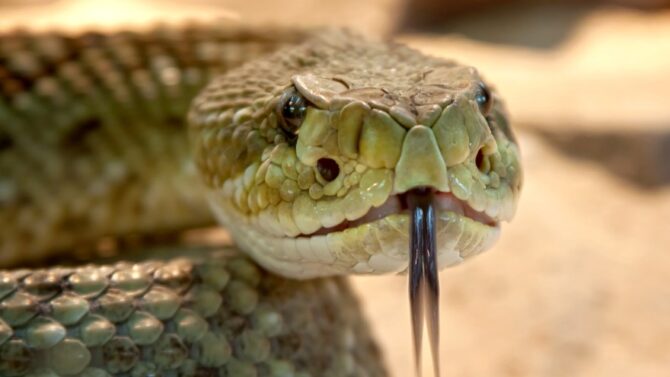
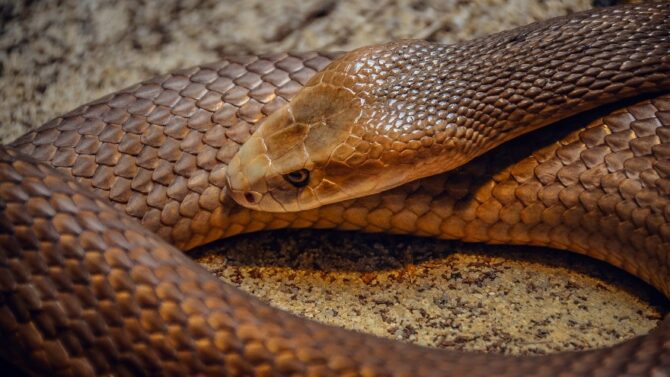
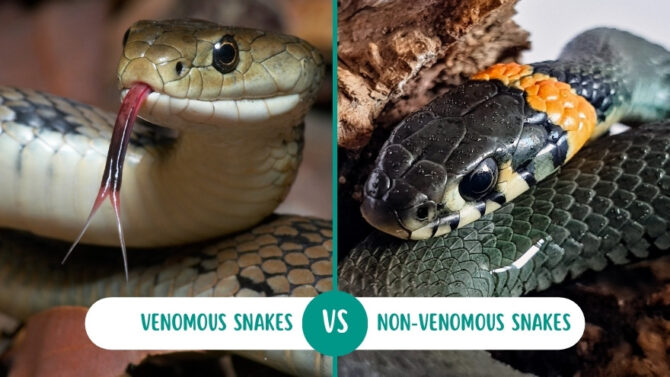
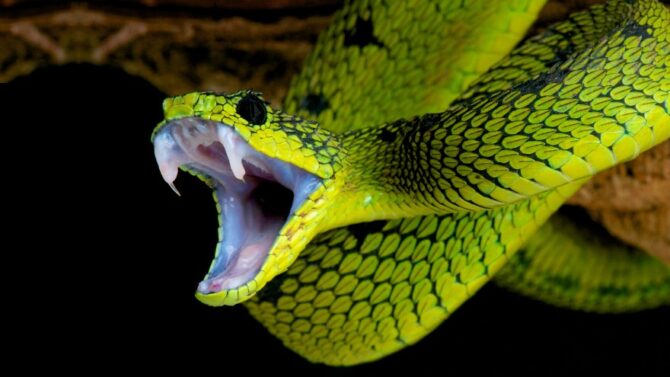
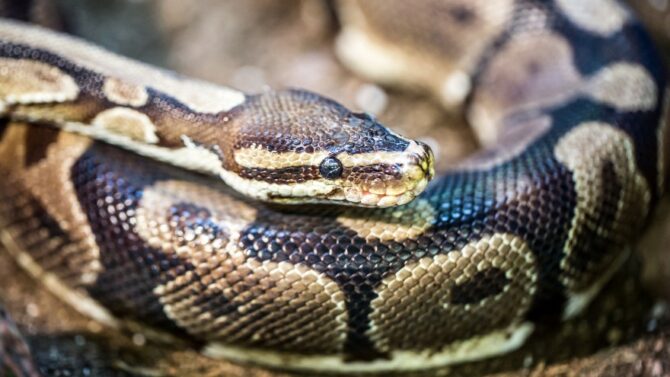
![How Often Do Corn Snakes Shed Their Skin [Answered]](https://animalvivid.com/wp-content/uploads/2022/11/How-Often-Do-Corn-Snakes-Shed-Their-Skin-Answered.jpg.webp)
